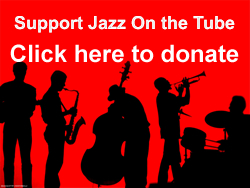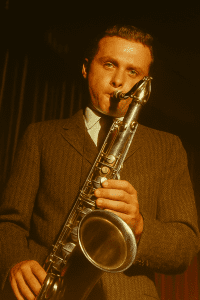Recently, we ran an article and video called “It is rocket science – a look at Monk.”
Well, if you really want to know Monk then you’ve got to talk about Bud Powell.
Three things to learn from watching Bud:
1) how physically comfortable he is
2) he’s not looking at the keyboard
3) he’s “singing”
What’s going on?
1. Bud was great because he LIVED at the keyboard and the only way you can do that is if you find a comfortable way to address the instrument in an ergonomically sound way. Someone at some point made sure he had good form.
(Update: Someone was a “West Indian man named Rawlins” and the lessons started at 5. Bud got the swing “bug” at 10 which would have been 1934.)
2. He’s not looking at the keyboard because he doesn’t have to. He’d completely internalized the keyboard and was playing from a combination of hearing, feeling, and visualization (which is different from looking.)
If you think about it, saxophone players don’t look at their fingers either. If you’re learning piano, spend as much time as you can: a) NOT looking at the keyboard and b) thinking about the keyboard and “playing” the piano when you’re not at the keyboard.
3. I doubt anyone would have hired Bud for a singing gig, but he is always vocalizing when he’s playing. What’s going on?
It is frighteningly easy to let the structure of your physical instrument dictate how you improvise. Some things are easier to do than others. Also, “muscle memory”, the thing that lets you reliably find your place on the keyboard, is essential, but it can also work against you. You can find yourself locked into physical patterns that are not very free.
How do you break this pattern?
You sing your solos – and then play them.
Singing is the freest form of musical expression there is. Also, great solos come from your mind (and spirit), not from muscular habits.
Singing is the most direct expression of the musical mind (even if you can’t sing very well.) It’s the most direct way to express your musical imagination vs trained habits on an external instrument.
Bud “thinks” his solo out loud and instantly, because he can, translates what he wants to say directly to his hands and the keyboard.
When speaking verbal language, you don’t stop and plan everything out. You don’t worry about what your larynx is doing. You have an intention of what you want to say and you get going. The words just flow without you having to stop and look up words in a dictionary or thesaurus.
That’s what it’s like for Powell. All the vocabulary and grammar of the instrument is connected to his hands the same way your vocabulary and grammar are connected to your vocal cords. He doesn’t have to think about that part of it. He’s just focusing on what he wants to say.
How did he get there? The same way you get to Carnegie Hall.
There’s a story about two friends coming over early in the evening and asking Bud to come out and party with them. He told them no, he was working on learning “Embraceable You.” They came back in the early hours of the morning and found Bud still at the piano working out the intricacies of the tune and getting it to reveal his secrets to him.
In short, Bud Powell was no accident.
Oh, and Bud solos like bebop saxophonists play. Listen to those lines. This is not something pianists generally did before “in walked Bud.”
The long and deep friendship between Monk and Bud
Dan Morgenstern provides some details in the liner notes from “A Portrait of Thelonious” by Bud Powell:
“The relationship between these two fountainheads of modern jazz has been close on both a personal and musical level ever since the legendary days in the early Forties at Minton’s Playhouse in Harlem when the still-teenaged Powell (Monk’s junior by four years*) would stop by to hear, and sit in with, the house band of which Monk was a regular member.”
There’s more to this story :
“As the musicians were packing up their instruments after the show, the police stormed the club and went after Monk. He refused to show his identification and was forcibly arrested. A fan barred the door and challenged the officers. They tried to push him aside, but he wouldn’t budge. ‘Stop,’ he yelled. ‘You don’t know what you’re doing. You’re mistreating the greatest pianist in the world!’ At this point a nightstick came down on his head like a lightning bolt. The young fan was Monk’s best friend, Bud Powell. He was dragged along with Monk and thrown into jail after his injury was superficially treated at the hospital.
After his release Powell complained of alarming headaches. He eventually checked into Bellevue Hospital, then spent three months in Creedmore Hospital. There he was treated with various psychoactive drugs and shock therapy. His artistic career had barely started, but henceforth he would be bedeviled by psychological problems. Monk was aware that Powell’s intervention had saved him from a similar fate. For his ill-starred protege, he wrote ‘In Walked Bud’, ’52nd Street Theme’, and ‘Broadway Theme’, otherwise simply known as ‘The Theme.’ The numbers were intended to be Bud’s property alone, and Monk never recorded them.”
From Thomas Fitterling’s “Thelonius Monk: His Life and Music”
Click here for my original article from 1997
– Ken McCarthy
Jazz on the Tube






